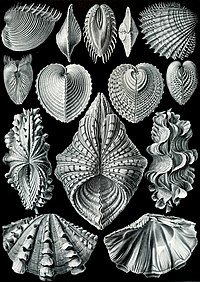
Photo from wikipedia
Abstract The development of aquaculture activities has posed an alternative solution for the preservation of some overexploited shellfish fisheries worldwide. In the same way, endemic Mediterranean bivalves such as Pinna… Click to show full abstract
Abstract The development of aquaculture activities has posed an alternative solution for the preservation of some overexploited shellfish fisheries worldwide. In the same way, endemic Mediterranean bivalves such as Pinna nobilis , highly threatened by habitat loss and coastal pollution, could found in aquaculture a solution for preserving the continuity of the species. Given the endangered status of the species, the biological and ecological processes regulating natural populations have been well studied, but there are still important knowledge gaps preventing the development of viable artificial cultures. This study describes for the first time the larval development of P. nobilis (from fertilization until pediveliger larval stages) in captivity conditions. Moreover, different rearing tanks of 5, 16 and 80 L, larvae density from 1 to 600 larvae mL − 1 , light conditions, food doses, were tested in order to establish the bases for the optimal rearing of the species and provide a source of individuals for restoring field populations. Results showed that 16 L tanks with a concentration of 2 larvae mL − 1 , constant temperature of 21 °C, 12/12 h photoperiod and fed with an “ optimal ” mixture of 25 cells per μL of Chaetoceros calcitrans + 33.3 cells per μL of Pavlova lutheri + 100 cells per μL of Isochrysis galbana ” appear to be the best conditions to rear larvae of P. nobilis . Different captivity conditions such as lower or higher tank volume, larvae density, or food doses; light privation did not report better results for larval development.
Journal Title: Aquaculture
Year Published: 2018
Link to full text (if available)
Share on Social Media: Sign Up to like & get
recommendations!